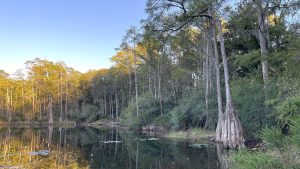If your lawn starts turning brown as the days get shorter—especially in December—don’t panic. This is a natural process for most southern grasses. That brown shade is just your lawn hitting the pause button for the winter months, entering dormancy to survive the cooler weather.
Why does grass go dormant?
Think of dormancy as your lawn’s way of hibernating. Many Florida grasses like St. Augustine, Zoysia, and Centipede are champs at handling the heat of summer. But when temperatures drop and sunlight gets scarce, they need a little rest to recharge. Sure, it’s not as lush as a summer lawn. But come spring, that green will bounce right back.
Adjust your lawn care routine
Taking care of your lawn in winter is a little different from the rest of the year:
- Water less: Lawns don’t need as much water in the cooler months. Stick to watering weekly or every other week.
- Mow smart: Keep your mower blade higher than usual. Scalping your lawn (cutting it super short) leaves it more vulnerable to cold weather damage.
These tweaks can help your grass stay healthy and protected through the winter.
Spring is just around the corner
When the weather warms up and days get longer, your lawn will wake from its winter nap and green up again. It won’t be long before you’re enjoying that gorgeous lawn—and maybe earning a little neighborly envy!
Need help?
Got questions about lawn care? We’re here for you. Watch our video on brown patch fungus. You can also give Slug-A-Bug a call at (321) 259-7844. Our experienced lawn pros are always happy to help.
The post Don’t sweat lawn browning during Florida’s winter months first appeared on Slug-A-Bug Pest Control.










